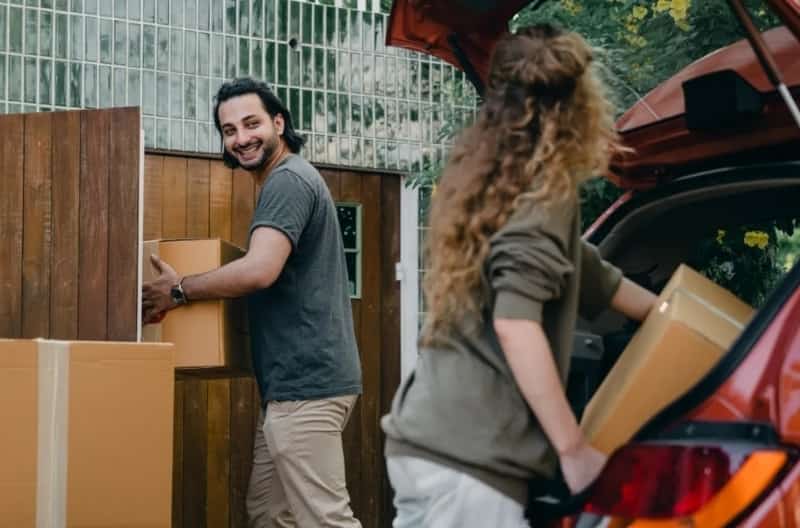Moving to a new home can be an exciting transition period. Your kids will make more friends and you get to explore a different city. Even though your upcoming move might result in many positive changes, you might not look forward to it once you realize how unsustainable it might become.
Traditional moving tips don’t take the environment into account. Flip your experience by using these eight tips to make your move sustainable.
1. Donate Unwanted Belongings
Jumping into forgotten closets of old belongings is always the first step to packing your home. As you pull stuff out from your crawlspace or attic, you’ll discover things you either want to keep or can’t wait to get rid of.
Don’t dump your unwanted belongings in your local landfill. Most things contain chemicals that break down and pollute the environment. Donate what you don’t want after ensuring that it’s still possible to reuse. A faded blanket could be someone’s next big thrifting purchase, but no one wants a blanket with holes and stains.
2. Compost Packing Paper
You can always avoid spending money on extra packing supplies by using what you have around the house. Wrap breakable objects in soft blankets or fill a half-empty box with a cushioning pillow. You won’t have to sacrifice your eco-friendly standards by using styrofoam peanuts to keep everything safe.
If you have to use packing paper or newspaper to wrap dishes and glasses, you’re not out of options. Once you get to your new home, shred and compost the paper so it becomes fertilizer. Paper breaks down into carbon, which becomes natural food for plants.
3. Rent Reusable Moving Boxes
Many companies now offer reusable moving boxes for affordable rental prices. Although the containers are typically plastic, they won’t end up in a landfill after your move. It’s more economical and environmentally friendly to temporarily use plastic bins than buy one-time cardboard boxes that immediately become trash.
4. Dispose of Paint Carefully
You might have a few cans of paint in storage from when you last redecorated your home. If you don’t need them in your new house, dispose of them carefully. Mix your paint with cat litter so it solidifies. Afterward, it can go into a trash bag.
Paint isn’t recyclable, but the cans are a different story. Once you rinse out the remaining paint, recycle or donate each can to a take-back program. Recycling steel and tin cans reduces nearly 74% of the energy needed during the manufacturing process. You’ll make a global impact just by recycling that paint cans you find sitting around your garage.
5. Move Boxes Outside
When it’s finally time to pack up your car and load boxes into the moving van, don’t prop your front door open. Set an alarm and move your boxes outside early that morning. As everyone hauls boxes around, the afternoon temperatures won’t force your HVAC unit to run consistently. Your front door can stay closed and you’ll minimize your carbon footprint.
Don’t forget about what your family will need during the move. Whether you’ll live a short drive away or across the country, pack a to-go bag so everyone has what they need. Toiletries, toys for the kids and extra clothes can all go in your car the night before. It’s one less thing to worry about so you can start loading boxes early.
6. Research Moving Companies
You also have the option to partner with a moving company that’s aware of their environmental impact. Maybe they use energy-efficient trucks or donate to green initiatives.
If you can’t find a sustainable moving company within your budget, use a carbon footprint calculator to find out how much pollution your move will create. After you find your answer, donate to a carbon offsetting program so your move becomes eco-friendly.
7. Avoid Mulitple Trips
It’s never smart to drive when it’s not necessary. Passenger vehicles contribute more than half of nitrogen oxide and carbon monoxide pollution. Even if you make a quick trip down the street, your car increases your carbon footprint and contributes to the growing threat of climate change.
Sometimes people make extra trips during the final parts of their move. You could have to run back and forth from your leasing office to file last-minute paperwork. Other people might recommend you skip the moving truck and shuttle your belongings between your old and new home if they’re close enough.
It all increases the fuel your car uses instead of helping the environment. Whenever possible, use email or phone correspondence to solve your problems. It also helps to make the move in one effort, rather than requiring multiple trips to transport your belongings.
8. Start Planning Early
Unless your move is around the corner, start planning early. Think through how you’ll pack and what you’ll need. Strategize ways to find green alternatives. When you have extra time, you can investigate every resource at your disposal so your move is as eco-friendly as possible.
The extra time will also prevent you from running out of supplies last-minute. Stock up on old newspapers and find soft things around your house to cushion your belongings. Your family’s carbon footprint relies on your creativity.
Prioritize Your Values
Moving is stressful, so remember to prioritize your values. When you feel crunched for time or packed into a tight schedule, using these tips to make your move sustainable will benefit the planet and your family.
You may also like to read: House Moves For Newlyweds


